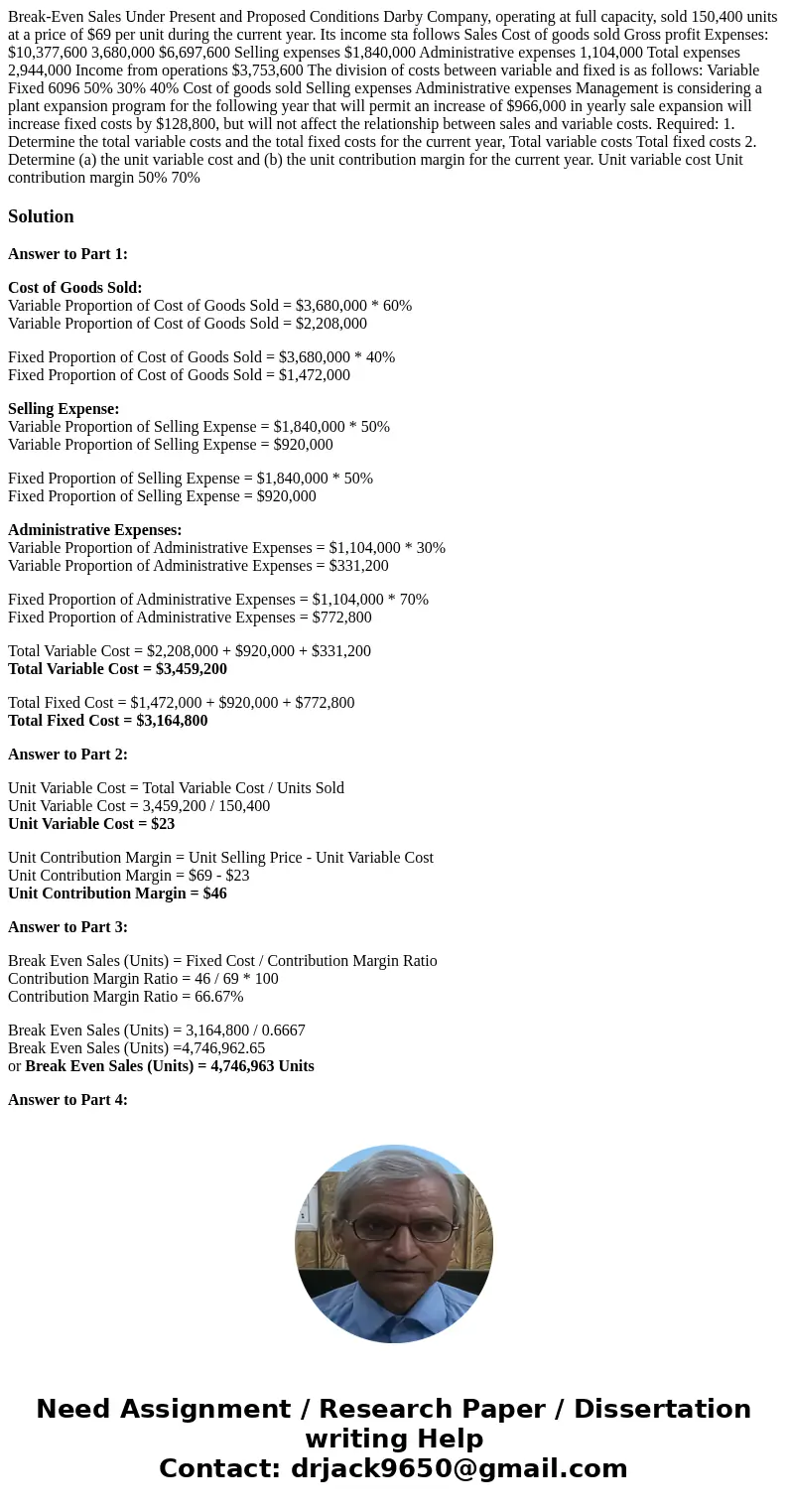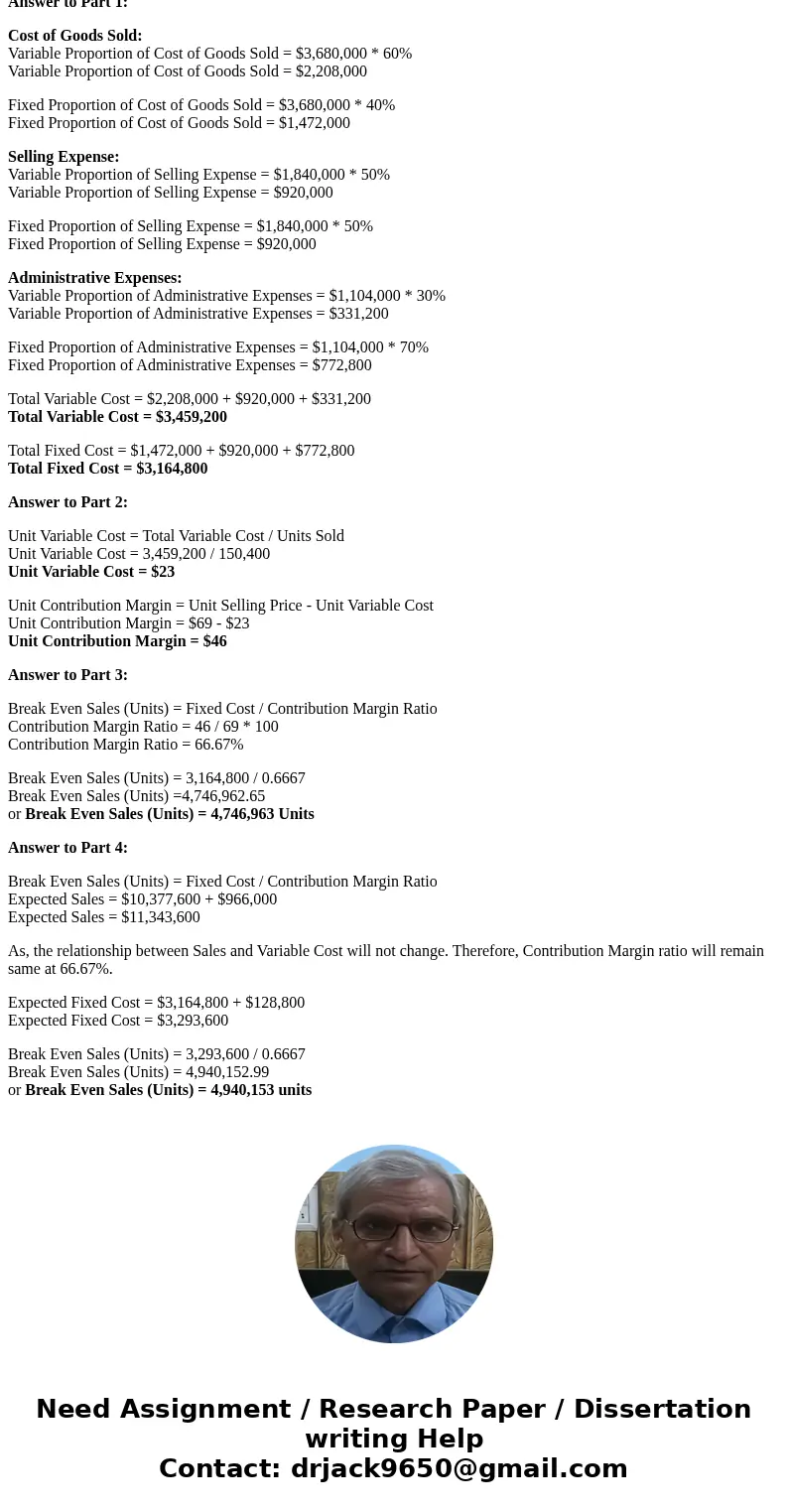BreakEven Sales Under Present and Proposed Conditions Darby
Solution
Answer to Part 1:
Cost of Goods Sold:
Variable Proportion of Cost of Goods Sold = $3,680,000 * 60%
Variable Proportion of Cost of Goods Sold = $2,208,000
Fixed Proportion of Cost of Goods Sold = $3,680,000 * 40%
Fixed Proportion of Cost of Goods Sold = $1,472,000
Selling Expense:
Variable Proportion of Selling Expense = $1,840,000 * 50%
Variable Proportion of Selling Expense = $920,000
Fixed Proportion of Selling Expense = $1,840,000 * 50%
Fixed Proportion of Selling Expense = $920,000
Administrative Expenses:
Variable Proportion of Administrative Expenses = $1,104,000 * 30%
Variable Proportion of Administrative Expenses = $331,200
Fixed Proportion of Administrative Expenses = $1,104,000 * 70%
Fixed Proportion of Administrative Expenses = $772,800
Total Variable Cost = $2,208,000 + $920,000 + $331,200
Total Variable Cost = $3,459,200
Total Fixed Cost = $1,472,000 + $920,000 + $772,800
Total Fixed Cost = $3,164,800
Answer to Part 2:
Unit Variable Cost = Total Variable Cost / Units Sold
Unit Variable Cost = 3,459,200 / 150,400
Unit Variable Cost = $23
Unit Contribution Margin = Unit Selling Price - Unit Variable Cost
Unit Contribution Margin = $69 - $23
Unit Contribution Margin = $46
Answer to Part 3:
Break Even Sales (Units) = Fixed Cost / Contribution Margin Ratio
Contribution Margin Ratio = 46 / 69 * 100
Contribution Margin Ratio = 66.67%
Break Even Sales (Units) = 3,164,800 / 0.6667
Break Even Sales (Units) =4,746,962.65
or Break Even Sales (Units) = 4,746,963 Units
Answer to Part 4:
Break Even Sales (Units) = Fixed Cost / Contribution Margin Ratio
Expected Sales = $10,377,600 + $966,000
Expected Sales = $11,343,600
As, the relationship between Sales and Variable Cost will not change. Therefore, Contribution Margin ratio will remain same at 66.67%.
Expected Fixed Cost = $3,164,800 + $128,800
Expected Fixed Cost = $3,293,600
Break Even Sales (Units) = 3,293,600 / 0.6667
Break Even Sales (Units) = 4,940,152.99
or Break Even Sales (Units) = 4,940,153 units


 Homework Sourse
Homework Sourse